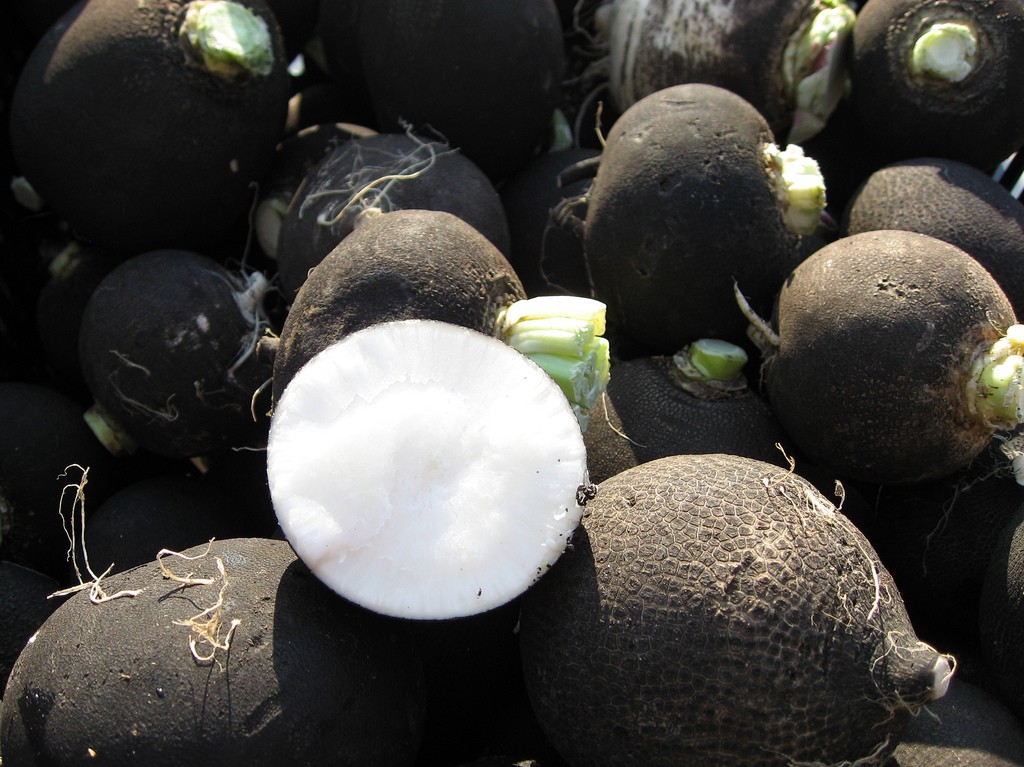Music for Babes

If I had to name my single greatest regret, it would be that the first piece of music my daughter ever heard was “Work” by Iggy Azalea. We hadn’t even left the hospital yet, and we’d already played a song — an awful one! — that I disliked so strongly I felt myself tensing up listening to it. But she was fussy and unhappy and that was one of the only things we actually had downloaded on our phones. So, “Work” by Iggy Azalea.
I regretted it because music is so terribly important to me: It is a thing to be taken seriously. Though I didn’t do a ton of pre-baby planning, I spent A LOT of time thinking about how I wanted her to be introduced to music. My favorites of course, but also new things, more adventurous things, and classical music, which I had barely heard until I was in college. I made playlists for her. I thought about how exciting it would be — every time I played something new — A Hard Day’s Night! — she would be hearing it for the first time.
My childhood musical obsessions were Sesame Street songs — the disco version of “What Makes Music” was a standard — and the Original Motion Picture Soundtrack of the 1982 film Annie, which is also the first movie I ever remember seeing in a theater. But music, I have found via the good vibrations of Zelda, is something which we discover naturally, and don’t need to be taught. It’s true that music does soothe very young babies, so, though we played a never-ending stream of white noise tracks for sleeping times, often during the day, I would sing to her. I began to build a repertoire, because, I noticed, babies also love to hear the same things over and over again — just like I do!
I started with just two songs: the Itsy Bitsy Spider, which I chose because it is incredibly creepy but lends itself to improvisation, and “Alligator” by Tegan and Sara. Slowly but without intention I added “Tomorrow” from Annie, “Oh My Dear” by Ween, Frère Jacques (which I sometimes translate to Frere Zelda), and finally, “White Teeth Teens” by Lorde. Now, I don’t have a great singing voice, but sometimes, I really put my whole effort into singing these songs to her, as much to entertain myself as to soothe her. In the past ten months, I’ve probably sung each of them hundreds of times.
As with lots of other repetitive things in life, the beauty blooms from the repetition. Just last week we listened to the Tegan and Sara record Sainthood during dinner. When “Alligator” came on, Zelda looked shocked and peeked around the corner toward the direction of the speakers. Then she looked and me and smiled, showing me her beautiful new teeth. I was amazed because I realized, for the first time, that my bad, personal a capella version of the song was good enough that she recognized it when she heard the original. Not bad, Topolskys, not bad.
Zelda also picks her own music. In our daily eight or nine hours of playtime, often in her room, I randomly play music I like for her, and she always perks up when she hears things she likes. She loves Blitzen Trapper, Brian Eno, and Madonna. To my dismay, she doesn’t appreciate Wire at all. But she loves nothing more than Lorde. We have listened to Pure Heroine a thousand times, easily, because we usually listen to it three or four times a day, no joke. We played it for her early on simply because my husband liked it and it was weirdly soothing — pop music, but music that sounds great at a low, hushed volume. I wasn’t a fan, but she seemed to enjoy it so we played it over and over while she lay there, snoozing or awake. It was relentless, and it beat a path into my skull.
One Saturday morning in April, about two months deep into daily doses of Lorde, on a drive upstate, we put her on the stereo in an attempt to keep Zelda — who wasn’t used to cars — calm. Looking out the window, I realized that I knew all of the lyrics to Pure Heroine. Also, I had to admit that the production was really very good. Also, the songs are excellent. “You know what’s strange about this album?” I said to Josh, “there isn’t a bad song on it, I guess.” I had allowed my daughter’s taste to steamroll me into submission. I too, loved Lorde.
The Parent Rap is an endearing column about the fucked up and cruel world of parenting.
Photo by lostintheredwoods
Brian Eno, Clark Mix
To commemorate the re-release of four Brian Eno records, all from the 90s, producer Clark has sewn some of their most interesting segments — not songs, necessarily — into a mix. This is weird, meandering, fascinating Eno, not sleepy ambient Eno or mild rock Eno, and it’s just the right length.
Thoughts Scattered
“We are committed to treating the brain specimens with respect and are disheartened to learn that some of them may be unaccounted for.”
New York City, December 1, 2014

★★★★ The breeze was firm but mild enough for a sweater with nothing on top of it. A thin cloud intercepted and scattered the sun on its way to the ground, and a low haze scattered it further. Windows glinted; scrollwork scrolled. The west side of the westernmost maple in the churchyard still held its canopy, shining like melted butter. Midday clouded over but then afternoon sun angled in, raising a glow from the leaves and bricks again. Uptown, though, was ash gray, the wind now damp and raw and gathering force along the way to the river.
Last Month's Songs
Here are all the songs we’ve posted in the last month, except for the YouTube videos, which you can find here. Enjoy!
Here is last last month’s, too, which I never got around to posting.
This month’s will be posted in January, and so on, forever, until we stop. Follow us on Soundcloud and the playlists will just show up in your app, along with the morning podcast, which is back.
Eat the Winter Radish

The first time I bought a black radish, shortly after moving from San Francisco to New York, I was excited. A real local winter vegetable! How odd and interesting it is, with its pitch black exterior and snow white interior! Then I ate it. It tastes like New York in the winter: tough, impossibly bitter, barely tolerable. It fights you. It does not want you to eat it. I did not have a good first winter in this city.
I haven’t gotten to the point where winter in New York doesn’t spin me into a toilet bowl whirlpool of depression, but I have at least figured out how to prepare this shithead of a radish.
As we move past the harvest season into the long, cold, garbage winter, things get harder for cookers of vegetables. As the ground freezes, the pantry narrows. We must rely on the supermarket and on produce grown in Argentina and Mexico and (ugh) California. We must used canned and frozen and packaged things. But the farmers markets are still selling a few items, and while most are not as pretty and inspiring as the produce of just a few weeks prior, there is one vegetable that stands out, vibrant in texture and flavor and even color, a vegetable that nobody seems to really care about: the winter radish.
Winter radishes are not like the ones you see Instagrammed in summer; these are not the delicate French Breakfast radishes or multicolored Easter Egg radishes, but the tougher, sometimes spicier, hardier varieties like daikon, watermelon, and black radish. They grow through the winter, one of the very few vegetables that not only survives the frost but craves it. It is worth learning how to manipulate the winter radish and bend it to your will, because for one thing, it can be very delicious, and for another, it’s very healthy, packed full of vitamin C and zinc and phosphorus and fiber.
There are four types of winter radish you will likely encounter at the market:
Black Radish: Rough and black on the globular outside, pure white on the inside, the black radish is the spiciest and toughest of the bunch, and the most difficult to work with. It should never be sliced and eaten raw as a summer radish would; you will regret this if you try.
White/Green Daikon Radish: A favorite of Japanese, Chinese and Korean cuisine, the daikon itself comes in lots of different colors and shapes, but generally the radishes marketed as daikon are an elongated pale radish that can grow to an enormous size. It’s mild in flavor, but more dense than summer radishes, and is often pickled.
Purple Daikon: My personal favorite winter radish, this is a shorter, more squat variety of daikon that appears a pale purple on the outside, sometimes two-toned, but on the inside looks as if a purple firework exploded. It is a little sweeter than most white daikons, and due to its prettiness is excellent for crudite.
Watermelon Radish: Also actually a variety of daikon, the watermelon radish is a little spicier and tougher than the purple daikon, but has as curious a coloring — pale green on the outside and rich pink on the inside, hence its name.
The Greens Are Good
Winter radishes are often sold loose, without the greens, but if you can snag a whole bunch, do it. Radish greens are one of the best parts of the whole vegetable, but, like carrot and beet greens, go bad in, like, a day and a half, so I like to preserve them in some way as soon as I get them home. My preferred method is a pesto: Wash the greens carefully, then throw in a food processor with some olive oil and maybe a little garlic (nuts, like pine nuts or walnuts, are fine but not essential). They make an excellent addition to any pasta dish or as a base for a soup.
Another good option is a saag. First, chop the radish greens into pretty small pieces — you don’t want big leaves here, so make sure nothing’s bigger than maybe an inch square. Put them in a colander and wash thoroughly; they are usually real dirty. In a heavy pot, like a dutch oven, saute a few cloves of garlic, a chopped chile (I like Thai bird’s eye), a chopped half of an onion, and a knob of ginger in oil until soft. Add in turmeric and cumin and stir until fragrant, then throw in the radish greens. Add in a splash of stock (chicken or veg), stir, cover, and turn the heat down to low, and cook them low and slow until tender. Serve with rice or naan.
Radish Chips
I like using the white daikon for this. Pre-heat your oven to 375 degrees. Using a mandoline — because this is a real pain in the ass with a knife — slice the daikon into very thin rounds. Put them all in a bowl and very lightly dress them with olive oil, salt, and pepper. It will be tempting to use a lot of oil, the way you would for, say, sweet potatoes, but don’t. For some reason, using too much oil will cause them to burn. Lay them out on a baking tray, being careful not to over-crowd, and bake for maybe twelve to fifteen minutes, flipping them halfway through. Watch them carefully; they’ll burn really, really easily. When done they should be golden brown and crispy.
Radish Noodle Salad
Both the purple daikon and the watermelon radish are beautiful when raw, but sort of less so when cooked: Their colors tend to blend together and get a bit muddy after you pickle or roast them or whatever. So I like to, at least sometimes, keep them raw. First, bring a small pot of water to boil, and cook a regular package of shitty college-student ramen, without the flavor packet. Drain the ramen and cool in the fridge while you make the rest of the dish. Heat a cast iron pan on the stove to medium-low and pour in a bunch of sesame seeds, toasting just a couple minutes, until browned and fragrant. Take one purple daikon and one watermelon radish, or whatever combination you want, and slice in half lengthwise, then slice thinly width-wise, so you have thin half-moons of radish. Do the same with a carrot or two. Then make your vinaigrette: Take a microplane and grate a knob of ginger into a small container, then pour in some rice wine vinegar, some brown sugar, some chile paste, and a couple drops of sesame oil. Shake to combine. When your ramen has cooled, toss the ramen, radish, carrot, sesame seeds, and dressing together, and let sit for a little while to let the flavors combine. Eat cold. (This goes well with cubed tofu, especially baked tofu, which you can make yourself or just buy at Trader Joe’s.)
Pickled Radishes
I prefer to pickle white daikon, just because it’s less pretty when raw, but any kind of daikon will do. (Watermelon radishes turn bright fuschia when you pickle them, which is kind of cool, but they don’t look like watermelons anymore.)
The Vietnamese pickle daikon and carrot, sometimes together, as one condiment, called đồ chua, which I have no idea how to pronounce. It’s usually served with rich meats, which is why it has found a natural home in one of the world’s perfect sandwiches, the banh mi. It’s a fantastically easy refrigerator pickle. To make: slice daikon and/or carrot into thin matchstick-like slices and put in a colander. Sprinkle with about a teaspoon of salt and a teaspoon of sugar, then them let sit in your sink; some of the vegetables’ water will begin to leak out. Squeeze them to get as much out as you can — there’ll be a lot — and put in a glass container of some sort. Then make your pickling liquid, which is about as simple as it gets: two parts regular white vinegar, two parts water, and one part white sugar. Stir to dissolve the sugar, then pour over the daikon and/or carrot. Let them sit for a couple hours at least, but preferably for a few days. They’ll keep for about a month, and will go well on basically anything: sandwiches, salads, as a topping on meats or fish, or as a salad by themselves with some crushed peanuts and herbs (mint, cilantro, basil).
The Black Radish
I have made black radish salad (disgusting, horrible), black radish mash (watery, bad), black radish pickles (tough, woody), and black radish roast (still too spicy, not tender enough). The black radish may be the toughest single ingredient to work with you can find at a farmers market in New York. But! One way I’ve used it that worked came from my own heritage. The Ashkenazic Jews, connoisseurs of shitty root vegetables and fatty cuts of meat, have figured out a way to use this donkey of the vegetable world in a way that makes total sense: treat it like horseradish.
To make, first get near a window, or set up a fan, or something; the fumes from the black radish are intense and painful. Get out a box grater and grate a few radishes finely. Do the same with an onion. Take a break to scrub your eyes because they will be hurting, like, really bad at this point, despite your fan and your window. Wrap up in a couple layers of paper towel and squeeze some of the water out, then add salt and pepper and some sort of fat. The traditional fat would be schmaltz, which is highly seasoned rendered chicken fat, but if you don’t have schmaltz around — and unless you’re my great-uncle Aaron there’s a pretty fair chance you don’t have schmaltz around — you can just use olive oil. Mix until the consistency is somewhere between tuna salad and hummus.
Black non-horse-radish, as I have decided to call this, is WEIRDLY AMAZING. It’s spicy and aggressive, contributing the same zing that horseradish or wasabi does, but it’s smoother and sweeter; I actually think it might be better. It goes with anything that’s rich: mix it into hummus, serve it with fatty meats like brisket, spoon it on top of a burger. Mix it with sour cream or creme fraiche or Greek yogurt to make a black non-horse-radish cream, and drizzle over roasted potatoes or serve in a little dipping cup for crudites. Dip a raw radish into your radish cream! Double your radish! Mix the black non-horse-radish cream with dill and dollop it on top of salmon. Mix some into a deviled egg recipe. The possibilities are limitless!
The black radish is a tough introduction to the winter radish family; it is a total dick. But its winter radish cousins, the various types of daikon, are not like this: they are mild and even sweet, gentle and beautifully colored. They are excellent raw, in salads or with cold noodles, and take better to pickling than almost any other vegetable. Do not abandon the farmers market just yet, is what I’m saying; there are still some gems to be had. And also black radishes.
Photo by Shihmei Barger 舒詩玫
Aesthetic Brutal
Aesthetic Brutal

On the internet’s visual language for suggesting — or “confirming” — conspiracy:
There’s a new style of folk art booming on the internet: The crudely rendered, text-and-arrow-happy conspiracy diagram. Let’s call it Chart Brut: Simple, unrefined, urgent, ominous, striving to be informative, and utterly incomprehensible. It’s a digital middle-ground between the string-and-thumbtack cork-board flowcharts favored by premium-cable obsessives like Rust Cohle and Carrie Mathison, and the meaningless tangles of agency responsibilities beloved by security-apparatus bureaucrats, and it’s emerged as the defining folk aesthetic of the 2014 internet. It shows up on message boards and community sites everywhere, attempting to clearly prove and outline connections and conspiracies.
It’s ugly, it’s effective, it’s everywhere, and it’s going to be play a big nasty part in the next election, probably.
I would give these image collages even more credit: In some ways, their popularity anticipated the dominant style of online political discourse in the last couple elections. Their defining feature is their modularity: They require no outside context, they can be emailed or posted or shared in any venue with more or less the same effect. Images travel well! Better than most things online, even still — they worked over email and on forums, and they work even better on social media and Reddit and 4Chan. Daily Show clips and gaffe-recap blog posts functioned similarly in 2012, as comforting moments of closure and comfort; now, identity-focused viral Facebook posts are battling insecurity across the political spectrum.
You don’t even really need to read or watch or examine these types of things! They signal a meaning and imply confirmation, and so they are passed along forever and ever, immune to context or response. They are of a kind with newer but just as annoying passive-aggressive “just one chart” and smug “the perfect reply” posts, which are wielded not to carry out arguments but to end them, but only in the minds of wielders (bowing out of arguments that haven’t actually ended while still somehow feeling victorious is a useful skill for people who love to fight online; these clips and images and posts make it available to everyone.) Chart Brut conspiracy collages accomplish a similar goal by a slightly different route: They end arguments not with certainty but with derailing, vague, unfalsifiable doubt.
Some Good Old-Fashioned Media Gossip
by The Awl

Here is a rumor that we’ve heard floating around the halls of the soon-to-be-abandoned Condé Nast building (and, crucially, not just from people who’ve worked at Wired!): Scott Dadich, the current white-male-in-chief, is trying to purchase the magazine from Condé Nast. It would require many millions of dollars, obviously, but that’s nothing for a few venture capitalists in these Golden Days of the Content Bubble, especially for the Valley’s longstanding Magazine of Record. (How would it make money for its investors? The Wired conference business has never been as glittering as All Things D or The Atlantic’s, but that could always change. And the Wired Store is just one of its infinite #branding opportunities.) The fifty-million-dollarish question: Would Condé let it go?
